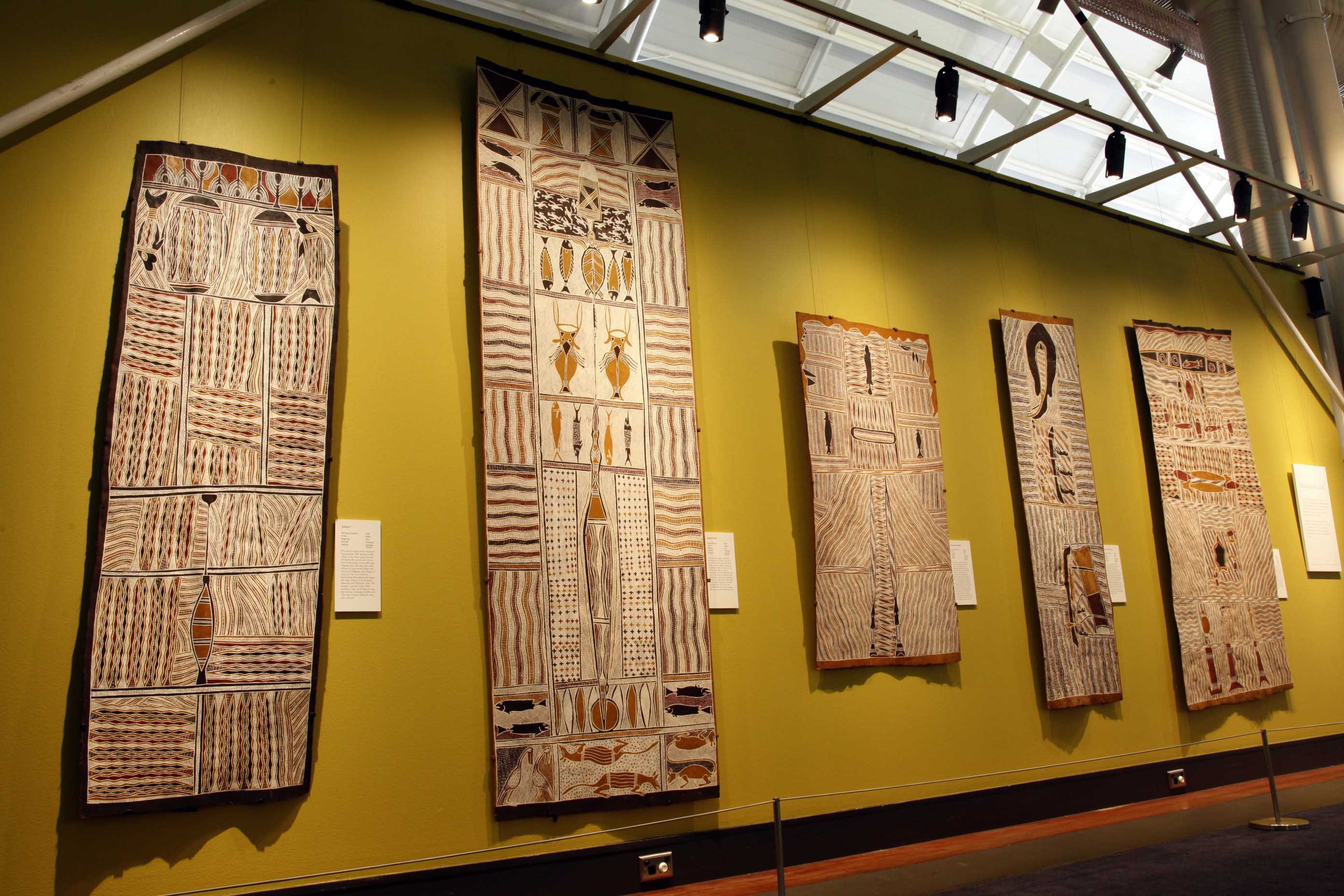
One of the education programs for primary and junior high school students at the Australian National Maritime Museum is called ‘My Special Place’. This Visual Arts program focuses on the artist’s use of cultural and personal symbols to communicate a sense of place.

Students in the museum’s Eora gallery during the My special place schools program
While the Saltwater Visions NAIDOC week display of ten bark paintings from the museum’s Saltwater Collection is on display in the Tasman Light Gallery, the museum’s teacher guides take groups of students and begin their session by sitting them down in front of the barks.

Display of bark paintings in the exhibition Saltwater Visions
The Saltwater barks were painted by Yolngu people from north-east Arnhem Land after 1996 in response to the desecration of a sacred site by a non-Aboriginal group of fishers. They destroyed a nest – the home of Baru the Crocodile – and needlessly cut the head off this animal that is a powerful creator spirit in Yolngu belief systems.
It is amazing to watch young students’ faces turn to despair when they are informed that Aboriginal Elders were dismayed to discover dismembered crocodile heads in the area. We then inform the students that the Elders response was to create a series of artworks designed to educate non-Aboriginal people about Yolngu connections to land and sea country and the plants and animals that are such an important part of this landscape.
In the program, students examine the cultural practices of the Yolngu people and their relationship to place through symbolic representations which define Creation, Law and Spirituality, land, clan responsibilities, authority and title to country.
After investigating the world of the Yolngu people, we explain that their sacred symbols and meanings should not be copied. Students then explore their own personal experience and develop an artwork in which their personal symbols and patterns communicate ideas and feelings about ‘their special place’.
The students are prompted to ask: What makes a place special? Where is your favourite or special place? Does it have some relationship with where you live? They are asked to think about why this place is important to them and/or their families.
Most of the students we teach in this visual arts workshop have had no previous experience working with symbolism. So as teacher guides we are always surprised and pleased to witness just how quickly most students are capable of expressing their special place so accurately through symbols. It’s an enjoyable and informative workshop for students, school teachers and of course teacher guides.
And it is extremely heart-warming to see and feel the empathy that school children have towards the Yolngu people and their journey to inform non-Aboriginal people of the importance of their land, spirituality and traditions through these paintings.
John Lamzies
Teacher Guide at the Australian National Maritime Museum
